Taco Comfort Solutions® has expanded their family of easy to use, high-efficiency ECM circulators with the addition of the 0034e™ and 0034ePlus™ models. With a maximum of 34 feet of head and 50 gpm, the new circulators offer up to 85% energy savings over a conventional circulator. These circulators are available with cast iron or Read more
Uncategorized
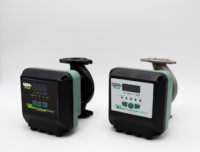
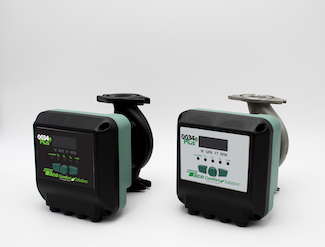 Taco Comfort Solutions® has expanded their family of easy to use, high-efficiency ECM circulators with the addition of the 0034e™ and 0034ePlus™ models. With a maximum of 34 feet of head and 50 gpm, the new circulators offer up to 85% energy savings over a conventional circulator.
Taco Comfort Solutions® has expanded their family of easy to use, high-efficiency ECM circulators with the addition of the 0034e™ and 0034ePlus™ models. With a maximum of 34 feet of head and 50 gpm, the new circulators offer up to 85% energy savings over a conventional circulator.
These circulators are available with cast iron or NSF/ANSI 61 & 372 certified stainless steel volutes, so they are ideal for closed-loop heating systems as well as domestic hot water recirculation systems. Both circulators also offer a convenient, rotatable control box cover for a professional look, no matter the orientation of the installed circulator.
The 0034e features an easy-to-use dial with five operating modes, including constant pressure, fixed speed, Taco’s exclusive activeADAPT™ self-adjusting proportional pressure, and 0-10V capability. The 0034ePlus adds proportional pressure and more constant pressure settings as well as a digital display with real-time feedback, including watts, GPM, feet of head, and RPM. Both circulators are dual-voltage 115V/230V.
Both new circulators come with exclusive features that make Taco’s ECM high-efficiency circulators so easy to use, including SureStart® automatic unblocking and air purging, BIO Barrier® black iron oxide protection, dual electrical knockouts, six-inch stranded leads, recessed flange nut-grabbers and double insulation so no ground wire is needed.
For more information, visit www.TacoComfort.com
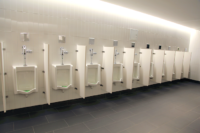
Ron George, CPD Below is a recommended flushing procedure for building owners, property managers, water utilities, health officials, code officials, service contractors, engineers, insurance companies and Interested parties to perform on buildings before re-opening buildings for occupancy after a long shut-down. With the recent coronavirus events causing many stay-at-home orders and extended vacancy of offices Read more
Ron George, CPD
Below is a recommended flushing procedure for building owners, property managers, water utilities, health officials, code officials, service contractors, engineers, insurance companies and Interested parties to perform on buildings before re-opening buildings for occupancy after a long shut-down.
With the recent coronavirus events causing many stay-at-home orders and extended vacancy of offices and workplaces, there is a looming, serious issue associated with stagnant water or aging water in the plumbing tanks, fixtures and pipes of buildings that have not been occupied for long periods of time. Bacteria will grow and flourish in the biofilm of the plumbing tanks, fixtures and pipes that have been sitting stagnant with ambient temperature or warm water where the water treatment chemicals have dissipated to levels that will not control bacterial growth. Studies have shown water treatment chemicals dissipate over time and there are several factors that affect the rate of dissipation such as pipe material, temperature, and organic contaminants in the water.
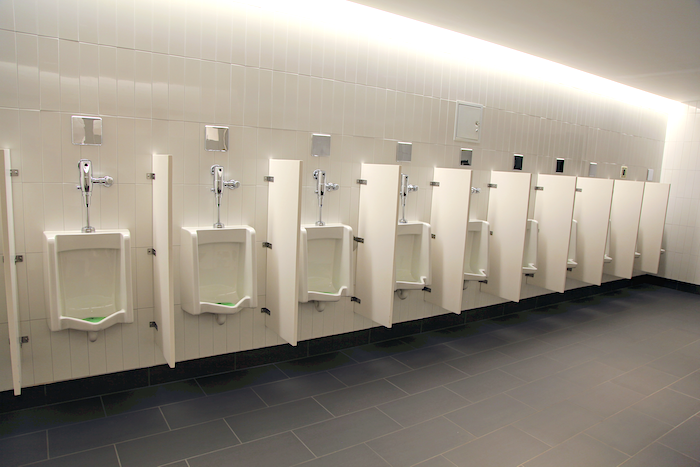
After the chlorine dissipates, bacteria can grow to high numbers. When bacteria and microorganisms are aerosolized in water from showers and other fixtures that can aerosolize the water it can be inhaled into the lungs causing Legionellosis or Legionnaires’ disease. Therefore, it is important to flush these stagnant pipes of bacteria laden water before re-occupying the buildings that have been vacant for long periods of time. I have been involved in developing Legionella standards & guidelines with ASHRAE and ASSE and I have spent over 42 years designing plumbing systems to simultaneously prevent scalding and Legionnaires disease. There are standards for flushing and disinfecting large public water mains but, there is no consensus standard for flushing and disinfecting plumbing systems within buildings.
In early 2020, government officials issued stay at home orders, with guidance from health officials, which has caused many buildings to sit abandoned with little to no water usage for weeks or months. When a building has been empty or unoccupied for an extended period, bacteria like Legionella and various other bacteria, viruses or disease-causing organisms can be found in inadequately treated water or stagnant water after the water treatment chemicals dissipate.
Before re-occupying a building that has been unoccupied for an extended period, it is recommended to flush stagnant water from the piping system before opening the building to occupants. To minimize to chances of transmission of Legionella bacteria and other microorganisms to humans, flushing water from the plumbing fixtures is the easiest, quickest and cheapest way to prepare for occupants to return to the building.
I am encouraging government officials, health officials, water utilities, code officials and other non-profits to implement these simple and inexpensive flushing procedures into national, state and local ordinances or guidelines to help protect the occupants of buildings from bacteria laden water upon return to buildings that have been sitting idle for long periods of time. These entities should use the language in this document and create a local flushing and disinfection ordinance for documentation of flushing procedures before opening and occupying buildings that have been idle for long periods of time. The government entity can decide what length of shut-down justifies flushing based on chlorine or other water treatment dissipation rates in your area. If a building has been idle for more than four weeks, a Legionella test should be conducted on first draw water before flushing to determine if a chemical disinfection procedure is needed to be performed. Chemical disinfection should be performed on the hot water system before heating the water.
Domestic Water Systems Flushing Procedure:
Building Address: ________________________________________ Flushing Date: ______________
Name of Persons Conducting the flush 0peration:_______________________________________________________________________ _______________________________________________________________________
For documenting the flushing operations, follow the tasks outlined below. Building owners or maintenance staff should be advised to perform these flushing operations in all buildings that have been closed for an extended period. This will reduce the risk of illness and death following a building that has been unoccupied for a long period. The objective is to replace all stagnant water in the potable water system with new water containing a disinfectant residual from the municipal distribution system.
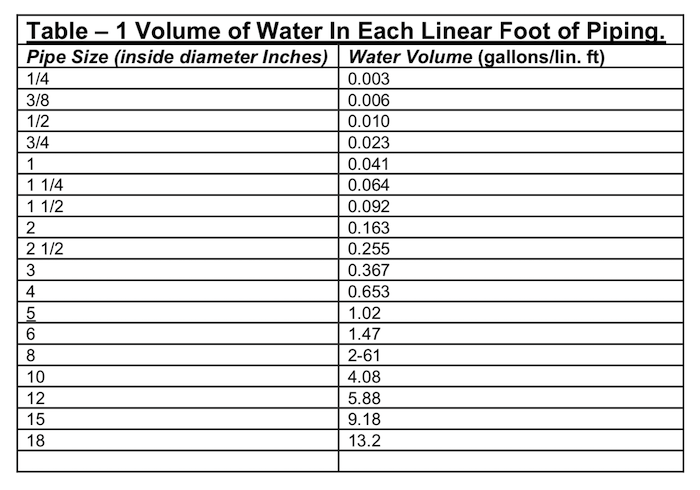
Flushing personnel should wear an “N-95 respirator mask” and Personal Protective Equipment during flushing operations. When performing a flushing operation, complete the following flushing procedure in the following sequence:
1. Collect a water sample of first draw water for testing the water treatment chemical residuals in the building service pipe. Collect the sample from a monitoring point in the service pipe at or near the meter and backflow preventer or where the service pipe enters the building.
Note the Water utilities water treatment chemical type. This pre-flush test should be serve as a baseline to compare pre-flush water quality with post flush water quality.
Locaton ______________________; Free Chlorine Residual: _____ppm; Test By: ______; Time: ______ am/pm
Location ______________________; Legionella Test1: _________ cfu/ml; Test By: ______; Time: ______ am/pm
(Note 1. – Conduct a Legionella test if the building has been significantly unoccupied for more than 14 days.)
If the pre-flush water quality test indicates any water discoloration, odor or other unusual characteristics note them below:
Notes:_________________________________________________________________________________________________
2. Collect a water sample from first draw water of at least five (5) remote locations within the building to determine the building water chemical residuals in the building. These locations should be documented for to serve as a baseline pre-flush to post flush to compare pre-flush water quality with post flush water quality.
Loc. #1 ______________________; Free Chlorine Residual: _____ppm; Test By: ______; Time: ______ am/pm
Loc. #1 ______________________; Legionella Test1: _________ cfu/ml; Test By: ______; Time: ______ am/pm
Loc. #2 ______________________; Free Chlorine Residual: _____ppm; Test By: ______; Time: ______ am/pm
Loc. #2 ______________________; Legionella Test1: _________ cfu/ml; Test By: ______; Time: ______ am/pm
Loc. #3 ______________________; Free Chlorine Residual: _____ppm; Test By: ______; Time: ______ am/pm
Loc. #3 ______________________; Legionella Test1: _________ cfu/ml; Test By: ______; Time: ______ am/pm
Loc. #4 ______________________; Free Chlorine Residual: _____ppm; Test By: ______; Time: ______ am/pm
Loc. #4 ______________________; Legionella Test1: _________ cfu/ml; Test By: ______; Time: ______ am/pm
Loc. #5 ______________________; Free Chlorine Residual: _____ppm; Test By: ______; Time: ______ am/pm
Loc. #5 ______________________; Legionella Test1: _________ cfu/ml; Test By: ______; Time: ______ am/pm
If the pre-flush water quality test indicates any water discoloration, odor or other unusual characteristics note them below:
Sampling Notes: __________________________________________________________________________________________________________________________________________________________________________________________________
(Note 1. – Conduct a Legionella test if the building has been significantly unoccupied for more than 14 days.)
3. Determine the building service pipe size and length. Service pipe size: _________ , Volume gallons per Linear foot Service pipe length: _________
4. Determine the volume in the building service pipe based upon its size and length in Table 1 below and multiply the volume by 2 for the required volume to be flushed from the service piping.
Service pipe volume from Table 1: _________ (Linear feet of service pipe x volume per foot from #3 above)
Service pipe volume from Table 1 x 2 = _________ Note 2
Note 2 – Volume of water to be flushed through the service pipe at 3 feet per second velocity per Table 2.
5. Determine and document the quantity and location of the fixtures required to be flowed simultaneously to have a velocity of 3 feet per second in the service pipe. (See table X) and hose valves will be flowing from the required number of flushing points in order to have a flushing velocity high enough to scour bio-film and sediment from the service pipe at a flow velocity in excess of 3 feet per second as determined in table 2.
6. Perform and document a pre-flush water quality test at the water service entrance and at 5 remote fixtures to determine water quality and water treatment residual, There should be a minimum 1 part per million (ppm) free chlorine at the building service entrance and 0.5ppm of free chlorine at the most remote fixture. For buildings with other water treatment chemicals in the utility water, consult with a professional for recommended minimum water treatment chemical levels or as directed by the facilities’ water management program team) entering the building. If the test shows the water quality is good, then no service pipe flushing is needed.
7. If the pre-flush water quality test indicates any water discoloration, odor or lack of sufficient free chlorine residual, perform and document a full velocity flush of 3 feet per second for the building water service pipe as follows:
a) Determining the proper number of fixtures to flow to flush the building service pipe at a minimum velocity of 3 feet per second, based on the size of the building service pipe size, (See table 2)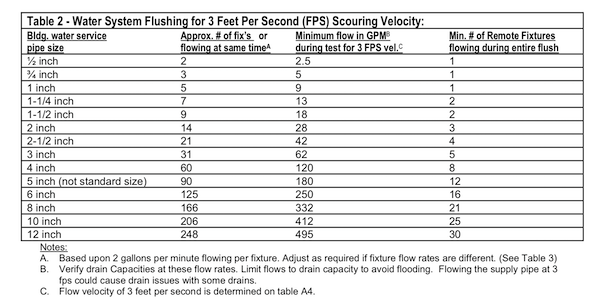 b) The flow can be through a combination of fixtures can be flowed through a combination of hose bibbs, hydrants and fixtures near the water service entrance. and test the potable water service connection until a disinfectant residual is detected or a volume equivalent to double the water held in the service connection is cleared, whichever occurs first.
b) The flow can be through a combination of fixtures can be flowed through a combination of hose bibbs, hydrants and fixtures near the water service entrance. and test the potable water service connection until a disinfectant residual is detected or a volume equivalent to double the water held in the service connection is cleared, whichever occurs first.
8. If a disinfection residual is not detected, after 30 minutes of flushing the building service pipe, Stop flushing and do not continue with the potable water system flushing operation. Contact the water utility for direction and ask to have them or the fire department flush the water mains through nearby fire hydrants to bring chlorinated water close to the building. If the building is in a cluster of buildings or area with many unoccupied buildings ther may be a logical place to flush a hydrant near the end of the water main.
9. When a disinfectant residual is detected on the building service pipe, open some faucets that are the farthest away from the building water service and on the end of each major branch main of the water distribution piping and let the hot and cold water run continuously until a disinfectant concentration is detected close to or equal to that of the chlorine residuals in the building service connection. A branch main is defined as a main distribution pipe (typically greater than 3⁄4” diameter) which supplies other branch pipes and fixture branch pipes.
10. Flush all remaining fixtures, tanks, and appliances connected to the potable water system (including exterior outlets). Flow water from both the hot and cold water systems. The following flushing procedure should be used based on each fixture type:
- Toilets and urinals shall be flushed 5 times each for 1.6 gpf fixtures.
- All other fixtures shall be flushed for a minimum of 3 minutes each, both hot and cold water with flows of 2 gpm.
- Any water storage or hot water tanks should be flushed at a rate to flow at least 2 times the volume of the tank.
- Hydro-pneumatic and thermal expansion tanks should have the water pressure relieved from them so that they totally discharge all water within the tank.
Infra-red faucets shall be operated for a consecutive period of time equal to 20 cycles for every 10 feet of 3⁄4 inch branch piping. 11. The person performing the flushing operation should record the room number, the fixture type & ID, flow rate in gpm, start time and temperature, end time & temperature, chlorine residual near end of flushing operation, and notes or observations for each fixture like: ambient temperature of the room, when the water temperature starts to change indicating fresh water is arriving at fixture, chlorine residuals in the first draw and at completion. thereafter until a minimum chlorine residual of 0.5 ppm is achieved at each fixture. Take a water sample in the first draw and upon completion of the flushing and Note any water discoloration, odor, etc) for first draw and test the chlorine residual in the final draw at the completion of the flushing operation. If the measured chemical residual is insufficient to control bacteria growth, perform and record the flushing operation as shown on the following “Fixture Flushing Record Sheet.”
11. The person performing the flushing operation should record the room number, the fixture type & ID, flow rate in gpm, start time and temperature, end time & temperature, chlorine residual near end of flushing operation, and notes or observations for each fixture like: ambient temperature of the room, when the water temperature starts to change indicating fresh water is arriving at fixture, chlorine residuals in the first draw and at completion. thereafter until a minimum chlorine residual of 0.5 ppm is achieved at each fixture. Take a water sample in the first draw and upon completion of the flushing and Note any water discoloration, odor, etc) for first draw and test the chlorine residual in the final draw at the completion of the flushing operation. If the measured chemical residual is insufficient to control bacteria growth, perform and record the flushing operation as shown on the following “Fixture Flushing Record Sheet.”
12. The water utility has a duty to deliver safe drinking water to the building service meter according to the safe drinking water act. Note: the utilities are allowed fall below the level of quality in the safe drinking water act for three, consecutive 6-month reporting periods before they must notify the public. The responsibility for building water safety is the responsibility of the building owner. The drinking water provider has no responsibility for water quality on the building side of the water meter. A water utility should strive to deliver quality water, but we know that the water utilities cannot guarantee safe drinking water because there are often water main breaks, construction, fire events and other disruptions of water main flows that cause turbid water and high bacteria events. For this reason, the building owner has a duty and responsibility to monitor the water quality coming into their building and have a water management plan in place to address water quality issues. In this day of water conservation, water flows have been reduced to levels that are less than 20 percent of flows prior to 1992. The flow in water mains have been reduced to the point where water treatment chemical residuals dissipate to levels that will not control bacteria growth in the water mains. Building owners must monitor the incoming water and adjust the water quality if needed by using supplementary water treatment systems. When a building owner is considering a supplementary treatment system, they should consult with a professional to determine if they need licensing, certification and any filters.
13. When a building is unoccupied for more than 7 days or a period of time agreed to by the building’s water management Program team, flushing should be performed immediately prior to re-occupancy. When a building is unoccupied for more than four weeks (28 days), or a period of time agreed to by the building’s water management Program team, flushing and disinfection should be done immediately prior to the building being reoccupied.

Note: Flush all sinks first, then flush showers, then flush water closets & urinals. Fixtures with flush valves can become clogged with debris and not flush properly if they are flushed first. If flush valves do not perform properly and run-on, shut off water and remove diaphragm and clean the orifice. When done flushing, remove faucet strainers and shower heads and clean or replace them.
Storage Water heaters should be maintained at a minimum temperature of 140F or higher in the tank as needed to offset heat loss and maintain a minimum hot water temperature at the lowest temperature in the system a couple of degrees above the Legionella Growth temperature of 122 F. (124 F) on the hot water return pipe connection to the water heater. The hot water return pipe just before the cold water connection to the water heater is the lowest temperature point in the hot water system. See the “Temperature Effects on Legionella Bacteria Table” Below. To prevent Sclading, all shower valve maximum temperature limit-stops should be adjusted to a maximum temperature of 115 F at showers & bathtubs to prevent scalding. (Consider a maximum temperature limit stop setting for showers and tub/showers of 110 F at hospitals, nursing homes and similar facilities where there is additional risk of scalding.)

Hot water temperatures can be higher in the storage and distribution piping and should be reduced or limited at or near the fixtures by code compliant temperature limit-stops that are properly adjusted on tub/shower valves or by temperature limiting valves that are properly set to limit temperatures at the point of use.
Every fixture in the building should be flushed in accordance with these guidelines or until the water treatment chemical residuals reach an acceptable level. Following these procedures should prevent thousands of workers from getting sick and dying from Legionnaires disease and other types of waterborne illnesses associated with stagnant water.
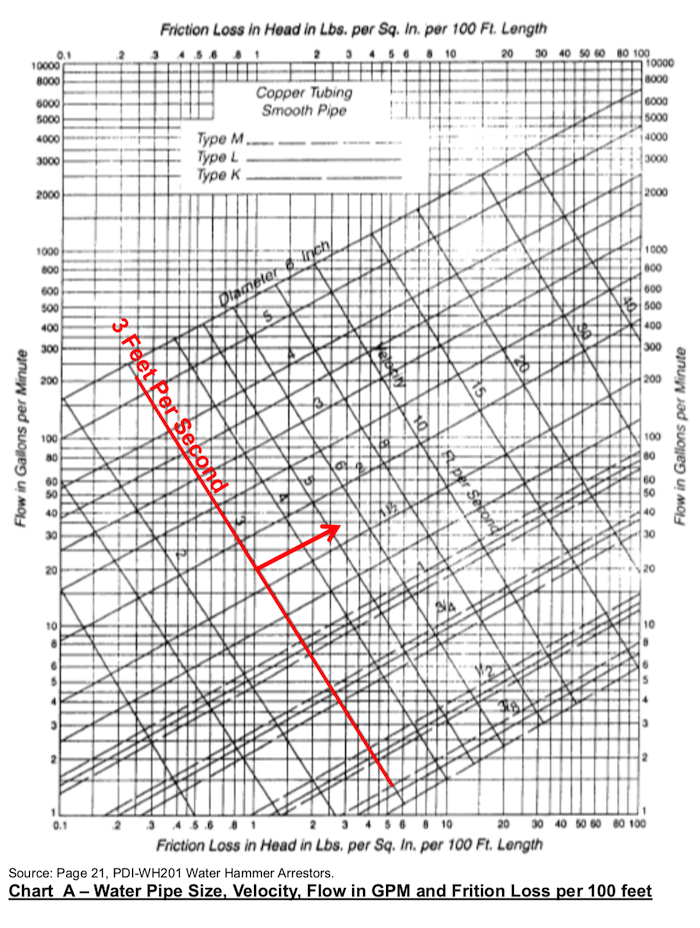
This paper refers to legal professional cannabis growers complying with state/provincial laws. Professional cannabis growers are well aware that environmental conditions play a critical role in plant quality and overall yield. Most can recite the ideal temperature and humidity for their crops without missing a beat. But ask most growers which type of pipe is Read more
This paper refers to legal professional cannabis growers complying with state/provincial laws.
Professional cannabis growers are well aware that environmental conditions play a critical role in plant quality and overall yield. Most can recite the ideal temperature and humidity for their crops without missing a beat. But ask most growers which type of pipe is best and they’ll likely to refer you to the closest head shop. The fact is professional growers (of cannabis or otherwise) are generally unaware of the piping options they have or the extent to which these options impact structural costs, energy efficiency and overall sustainability. When these matters are given proper consideration, polypropylene emerges as a great choice for this burgeoning industry.
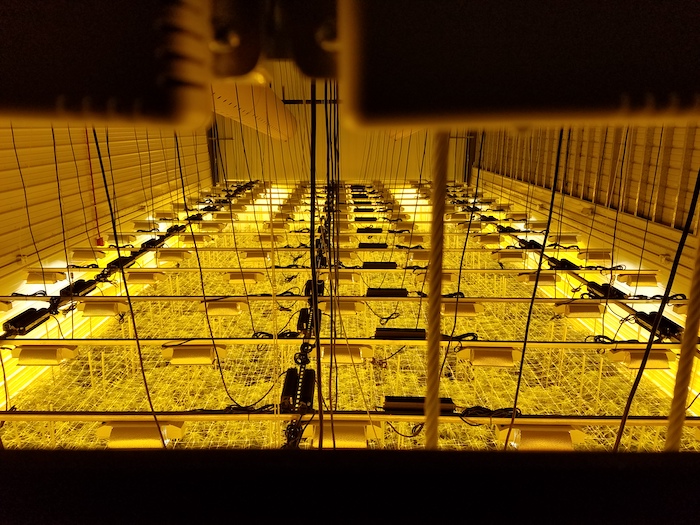
Cannabis growing facilities use a lot of energy and generate a lot of heat, making a reli- able cooling system essential.
Polypropylene pipe has been widely used for plumbing and hydronic heating in Europe since the 1970s. However, it was not introduced to North America until 2005. Since then, it has become increasingly popular for a wide range of applications, from radiant heating of sports fields to process applications in craft breweries. It is a lightweight yet highly durable thermoplastic pipe with pressure and temperature tolerances that make it suitable for hydronic heating and cooling, potable water, and industrial and food-grade applications.
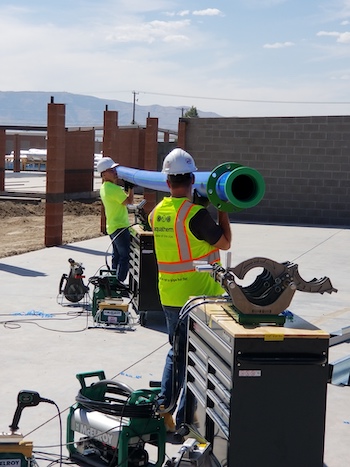
Depending on size and wall thickness, polypropylene pipe can weigh up to 70% less than carbon steel pipe.
Unlike metal pipe, the installation of polypropylene pipe does not involve traditional torch welding. Instead it relies on a flameless heat-fusion method that’s easy to learn and highly reliable at creating virtually leak-free connections. When contractors become adept at heat fusion, they can typically install polypropylene piping much faster than welding copper, carbon steel and stainless-steel pipe.
An appealing characteristic of polypropylene is its chemical purity and inertness. It does not rust, scale or leach any impurities into to the fluids it transports, nor does it react with most chemicals. This not only improves its longevity over other piping materials, it also makes it suitable for a wide range of applications. Furthermore, unlike PVC or CPVC piping, polypropylene pipe does not become brittle or susceptible to cracking when exposed to cold temperatures. A full list of the physical/performance characteristics of polypropylene and associated benefits is shown in Table 1.
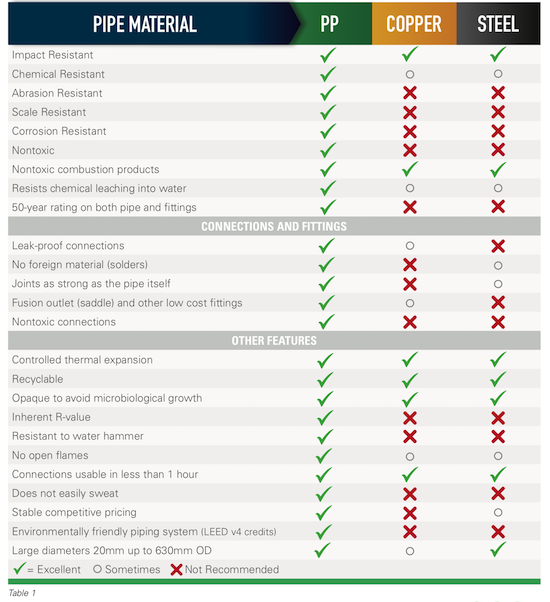 Where does polypropylene fit into the day-to-day operation of a grow facility? The answer is pretty much any application that requires the transport of fluids. But to truly understand the potential roles that polypropylene can play in the growing cannabis industry, one must first look at the special needs, challenges and values of the industry.
Where does polypropylene fit into the day-to-day operation of a grow facility? The answer is pretty much any application that requires the transport of fluids. But to truly understand the potential roles that polypropylene can play in the growing cannabis industry, one must first look at the special needs, challenges and values of the industry.
An Energy Intensive Industry
The electrical demand of cannabis grow facilities is staggering. According to the 2018 Cannabis Energy Report, legal cannabis cultivation in the U.S. consumes an estimated 1.1 terawatt-hours of electricity a year, enough to power all of Newark, New Jersey or Anaheim, California.[1] In indoor grow facilities — very often repurposed warehouses or other types of vacant buildings —this massive energy consumption is caused by the artificial light required to grow cannabis. Heat from these lights imposes another energy burden: cooling. Year-round cooling loads are unavoidable in indoor facilities since carefully controlled space temperatures are essential for growers to achieve maximum yields. Greenhouse facilities may avoid most of the need for artificial light, but still need heating, cooling and dehumidification. In either case, large facilities benefit from the long-term efficiency of centralized hydronic heating and/or cooling systems, which are typically about 15 percent to 20 percent more efficient than other HVAC options.[2] These systems utilize piping to transport the heating water to and from a central boiler system and to transport cooling water to and from a chiller and/or evaporative cooling equipment.
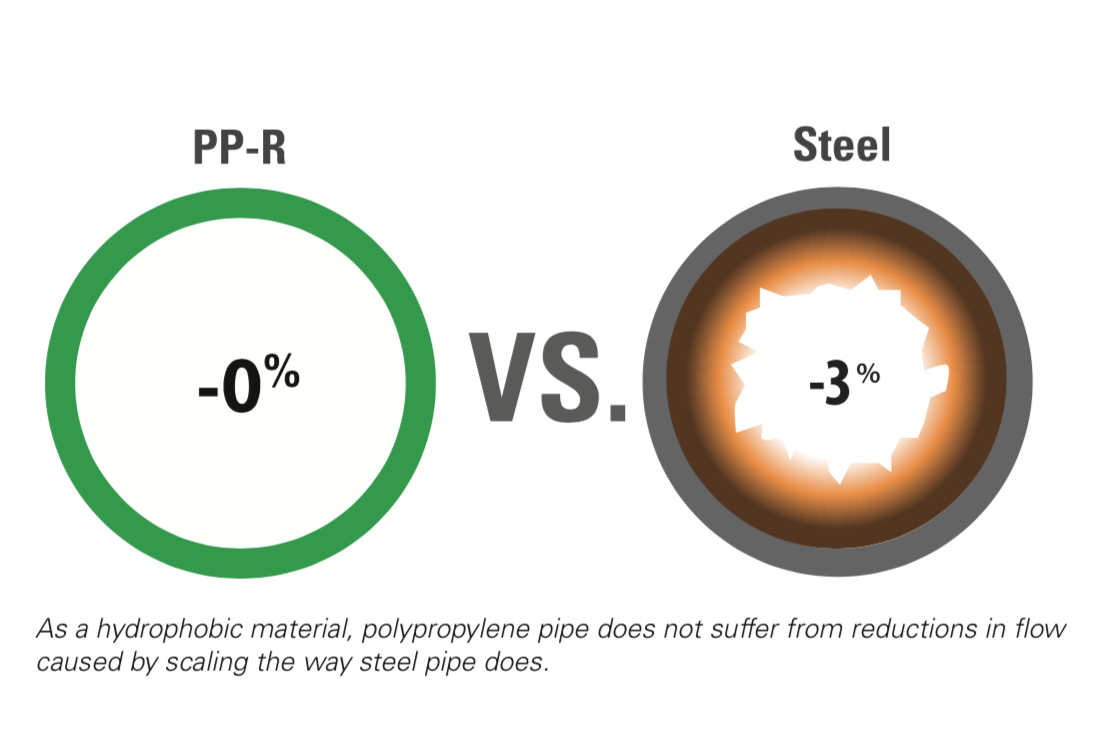
Polypropylene piping is ideal for these applications for reasons that directly impact the efficiency and longevity of a grow facility. First, the inner walls of polypropylene pipe are uniquely smooth, resulting in reduced friction losses, reducing pump energy consumption. The friction losses of polypropylene start out low and remain low for the life of the system because the pipe is not susceptible to rust or scale. Steel, copper and other metals do rust and corrode over time, increasing friction losses and the pump energy required to overcome those losses.
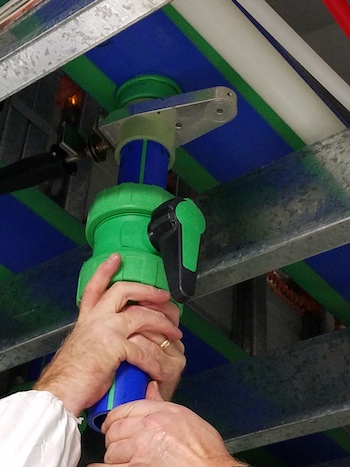
Socket fusion (shown here) is one method of heat-fusing polypropylene pipe and fittings.
Polypropylene pipe also can be used in conjunction with geothermal heat pump systems which are frequently applied in agriculture. Geothermal systems rely on the earth or a body of water as a heatsink and/or heat source for highly efficient transfer of heat to and from the growing spaces for space conditioning and agricultural processes. In these applications, polypropylene pipe transports the heating and/or cooling fluid from the central energy source to forced-air equipment or a radiant distribution loop. The pipe can be buried in the ground and/or concrete floors without the need for any protective sleeves or wrap.
Another strategy that grow facilities often use to reduce their energy consumption is heat reclaim. In these applications, polypropylene pipe can be used to transfer energy to or from process water, wastewater, or any other source that can be used to pre-heat or pre-cool water for other heating, cooling or process needs. This gives growers the opportunity to fully optimize whatever resources are available to them – whether it be the sun, a nearby lake, or even a nearby wastewater treatment plant. It’s all been done with polypropylene.
Specialized Growing Strategies
Not all commercial cannabis is grown in soil. Some is grown hydroponically with plant roots submerged in a nutrient-rich solution of water and fertilizers while others are grown aeroponically with roots suspended in air, drawing nutrients from a sprayed mist. These grow strategies very often rely on high purity water (typically reverse osmosis or deionized water) when existing water sources are determined unsuitable.
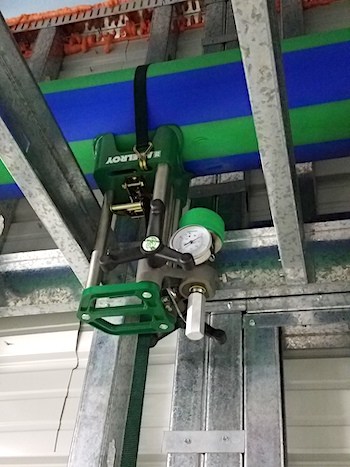
Versatile fusion tools allow polypropylene pipe to be heat- fused in spaces in which welding metal pipe would be difficult or impossible.
High purity water automatically limits piping options. Copper should never be used with deionized water because if the fluid’s pH levels fall below 6.5, corrosion may occur and copper molecules can leach into the supply. Although stainless steel piping is an option for these applications, it is often cost-prohibitive and it, too, will leach over time if the water should become too acidic or too alkaline. Polypropylene is ideal for these applications because it does not leach, and its installation never requires the use of any potential contaminants such as solder, flux or glue. It can even be used for potable water and food processing since it is available in formulations that meet both NSF 51 and NSF 61.
Facilitating Construction and Expansion
Growers and owners are typically under a lot of pressure to quickly get grow facilities operational so they can begin the journey from seed to profit as soon as possible. Construction schedules are always a challenge, particularly when it comes to mechanical components like piping. Installing metal pipe requires licensed welders (expensive and increasingly scarce) as well as special permitting for the use of open flames on a jobsite. In addition, maneuvering heavy sections of metal pipe into existing structures and then supporting it so it can be welded into place is both logistically and physically challenging. Under these circumstances, a seemingly trivial error like a miscalculation in metal pipe length can put a project several days (if not weeks) behind schedule.
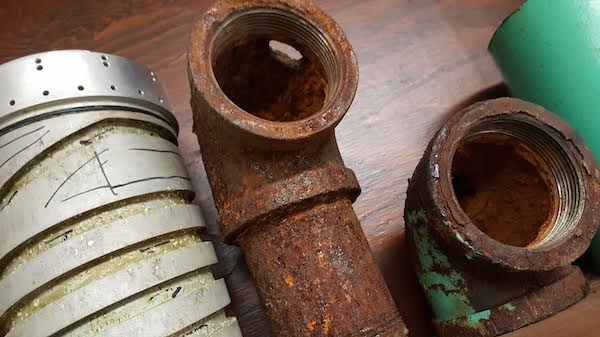
Polypropylene pipe is hydrophobic and will never scale and corrode the way metal pipe does.
Opting for polypropylene pipe keeps these jobsite nightmares at bay for the following reasons:
- Polypropylene is lightweight – especially helpful in greenhouses where structural support is limited
- Polypropylene fittings can be prefabricated offsite in controlled areas so that jobsite fabrications are minimized – some manufacturers even offer fabrication services
- Improper lengths can usually be amended at the jobsite with little disruption to work schedules
- The pipe’s maneuverability compared to metal means it can be better negotiated in tight spaces
If an owner has hopes to expand the facility in the future (as many do), polypropylene piping systems are much easier to build out than metal pipe. Strategically located shut-off valves make it easy to isolate flow and cut into existing pipe to create new connections with minimal disruption to current operations. Fusion outlets allow for easy and relatively inexpensive expansions and one manufacturer offers a hot tap solution. Again, no flames or permits are required.
Beer There, Done That
If cannabis entrepreneurs need relevant examples of all that polypropylene can do, they need only look as far as the craft brewing industry. Craft brewers, an intensely collaborative group, have solidly embraced polypropylene for all that it has to offer, most notably its purity, sustainability, and fast and flexible installation – interests that closely parallel those of the cannabis industry.
“The word of mouth in the craft brewing industry is amazing, so we’ve had tremendous growth from breweries using it, not just for the glycol lines but in their heating and cooling applications, their geothermal applications, their domestic water supply, CO2, compressed air applications and beyond,” said Barry Campbell, VP of Marketing at Aquatherm, a leading manufacturer of polypropylene pressure piping systems.
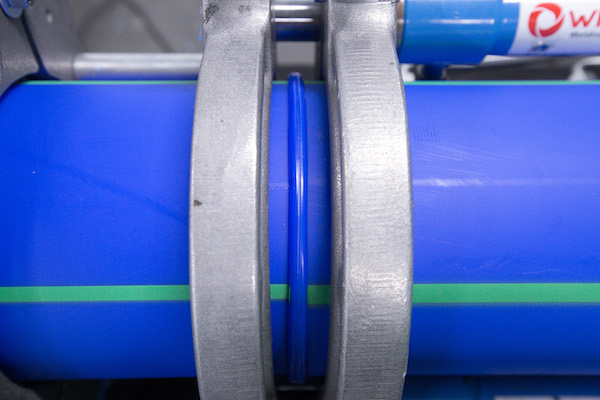
A properly executed heat-fusion on polypropylene pipe creates a single piece with no leak paths.
According to Campbell, the fact that polypropylene is among the most environmentally friendly piping systems available has helped Aquatherm gain favor among craft brewers. One polypropylene pipe manufacturer has also done the certification work to allow the product to contribute to LEED v4 credits in the U.S. Green Building Council’s (USGBC) program.
An interest in sustainability is just one of the many commonalities that exist between the cannabis and brewing industries. Like so many newly incorporated cannabis growers, many craft brewers begin their entrepreneurial journey in the shell of a vacated building where existing infrastructure can challenge piping installations. The building or parking lot next door is “Phase II” of their venture. Finally, owners are often the same people brewing the beer or growing the cannabis, so they tend to be more hands-on in the selection of mechanical equipment. They do their own research and tend to look outside the box for ways to conserve energy.
Robert Millspaugh, operations supervisor at Flathead Lake Brewing Company in Bigfork, Montana, did extensive research on what piping to use for the process side of the brewery before ultimately choosing polypropylene. Flathead Lake, born from the ruins of an old bowling alley, installed several thousand feet of polypropylene to transport both heating water and glycol for heating, cooling, and process applications. Part of the system even uses clean effluent from a nearby water treatment plant to indirectly pre-temper process water for better efficiency.
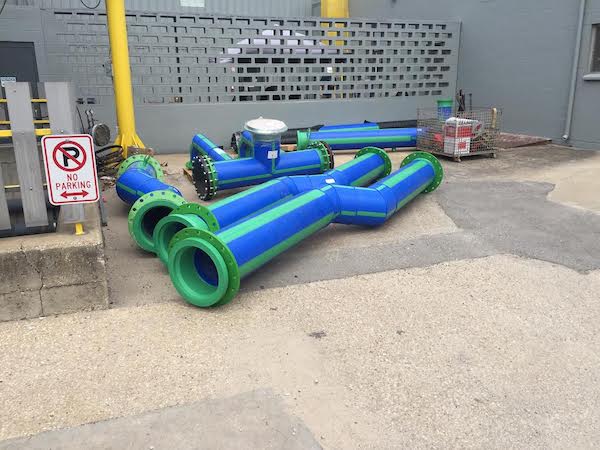
“We were looking for products that would help us achieve a LEED certification and [polypropylene] had a lot to offer. I also came across an article on Epic [Brewing Company in Salt Lake City] and how they used [polypropylene] in a renovation and discussed the product with the brewer there,” said Millspaugh.
Polypropylene also has been used successfully in brewing applications that require piping for food-grade and potable water.
Avondale Brewing Co., in Birmingham, AL was the first North American brewery to use Aquatherm’s food-grade (NSF-51) polypropylene pipe to transport beer from vessels in the main brewery to its packaging building where it is kegged, canned and bottled. The piping, which also is NSF-listed for potable water, is cleaned and sanitized between uses. Of course, like all of the manufacturer’s polypropylene systems, the piping is guaranteed to be free of heavy metals and toxic chemicals.
Cleanliness is a high priority in breweries and is one of the main reasons Founders Brewing Co. in Grand Rapids, MI, decided to use polypropylene in a heat reclaim process that taps heat from the brewing process to pre-heat outdoor air before it enters the building’s HVAC system. The piping is wash-down rated, so the brewer can keep the brew facility sparkling clean.
Examples like these demonstrate the potential for polypropylene piping in the cannabis industry.
“The craft brewing industry and everything it has been able to do with our pipe has created an unexpected blueprint for cannabis growers and how they can use polypropylene to facilitate construction, save energy and be more sustainable,” said Campbell.
[1] New Frontier Data, 2018 Cannabis Energy Report. Scale Microgrid Solutions and Resource Innovation Institute, co-authors. https://newfrontierdata.com/product/2018-cannabis-energy-report/
[2] Surna, Sustainability for Your Indoor Garden (blog) https://surna.com/sustainability-for-your-indoor-garden/
https://www.youtube.com/watch?v=Q7O1YpJoNWU Beyond The Service Join Devynn and John Thompson in the very first episode of BTS where they talk about business branding and visual marketing. New episodes of BTS are on track to start airing weekly in March! All the Beyond The Service videos will be posted to our YouTube channel as a series, you Read more
Beyond The Service
Join Devynn and John Thompson in the very first episode of BTS where they talk about business branding and visual marketing. New episodes of BTS are on track to start airing weekly in March!
All the Beyond The Service videos will be posted to our YouTube channel as a series, you can subscribe to our channel and get notifications when new episodes are available. Topics are wide ranging, discussions can get heated or have John and Devynn rolling in laughter so you won’t want to miss a single video.
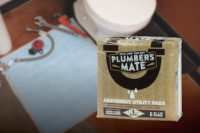
Plumber’s Mate is a convenient alternative to rags, paper towels and containers during faucet, toilet, water heater and other plumbing and hydronic HVAC repairs. RectorSeal® LLC, Houston introduces Plumber’s Mate®, a patented ultra-absorbent utility pad designed for plumbers and HVAC hydronic technicians to protect property from damaging jobsite water drips, spills and accidents during installation and Read more
Plumber’s Mate is a convenient alternative to rags, paper towels and containers during faucet, toilet, water heater and other plumbing and hydronic HVAC repairs.
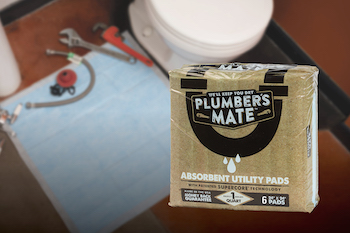 RectorSeal® LLC, Houston introduces Plumber’s Mate®, a patented ultra-absorbent utility pad designed for plumbers and HVAC hydronic technicians to protect property from damaging jobsite water drips, spills and accidents during installation and repairs.
RectorSeal® LLC, Houston introduces Plumber’s Mate®, a patented ultra-absorbent utility pad designed for plumbers and HVAC hydronic technicians to protect property from damaging jobsite water drips, spills and accidents during installation and repairs.
The Plumber’s Mate 8.25 (H) x 7.5 (W) x 2.5 (D)-inch (21 x 19 x 6-mm) plastic bag packaging includes six absorbent pads that each unfold to 24 x 24-inches (61 x 61-mm) for placement under potential water drips and spills. Each pad is constructed of three-pieces: 1) dry touch top layer; 2) dynamic liquid containment layer that uses SuperCore technology to hold up to one quart (0.9-liter) of water; and 3) a leak and waterproof protective plastic layer back sheet, that prevents moisture contact with floors and molding.
Plumber’s Mate is a neat, clean, convenient and disposable alternative to rags, paper towels and cumbersome catch-all containers when working in cramped areas of dishwashers, sink cabinets, water heaters, washing machines and toilet supply lines. Besides service work, Plumber’s Mate is ideal as a temporary protectant under slow dripping supply water sources until permanent repairs can be made.
Other Plumber’s Mate features include:
- Available in cases of seven 6-packs;
- Perfect solution for drying hard-to-drain toilet tanks before repairs;
- U.S. patent number 6,675,702 B1;
- Uses the same three-piece technology as hospital-grade bed pads;
- Made in the USA with domestic and foreign-manufactured materials.
Plumber’s Mate is available at most plumbing and HVAC trade wholesale distributors. Individual packages can be displayed on J-hook merchandisers or cases can be opened into branded, sleeved cardboard counter displays.
For more information on Plumber’s Mate, please visit the RectorSeal webpage: https://rectorseal.com/product/plumbers-mate/,
